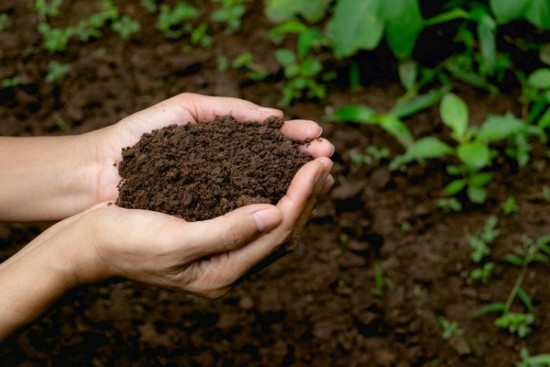With summer in full swing, you might be thinking about showing off your green thumb by starting a garden. One valuable addition to any home garden is compost, which is a mixture of “browns” (branches, twigs, leaves, etc.), “greens” (grass clippings, vegetable and fruit trimmings, etc.), and water (1). Adding compost to your garden adds moisture to your soil, promotes the growth of helpful bacteria and fungi in your soil, helps fight plant diseases and pests, and promotes overall sustainability. The ever-versatile peanut can be a valuable addition to your compost as a “brown” ingredient. The carbon that peanuts contain acts as a valuable energy source for the microorganisms that help break down your compost (2). If you’ve ever wondered about how to compost peanut shells, but you’re not sure where to start, you’ve come to the right place.
Overall, composting peanut shells is fairly simple. Your first step is to check your peanuts for signs of infection or lesions. Avoid composting peanuts that appear to be infected, as they may contribute to plant diseases taking root in your garden. However, this is more likely to be an issue if you’re getting your peanuts from a garden. If you’re choosing to compost with leftover peanuts/peanut shells you’ve bought at a store or restaurant, this is unlikely to be a problem.
Your next goal is to crush the peanut shells to speed up the decomposition process. To do this, place the shells on a flat surface and walk on them, or collect them in a large plastic bag and crush them with a rolling pin.
Once your peanuts are thoroughly crushed, soak them in water for a minimum of 12 hours. If you’re using salted peanuts, change the water at least once during this process to remove excess salt from the peanuts that could harm your compost’s microbes or future garden plants.
Next, add the soaked peanuts to any other “browns” you want to compost, and then cover your “browns” with a layer of “greens.” Finally, top your compost with some garden soil and a gentle watering. Covering and storing your compost in a shady area helps it stay moist as it matures. As your compost heats and decomposes, “turn” the pile by mixing it every week or two to re-distribute oxygen throughout the pile so your growing microbes can breathe. Turning compost helps the decomposition process move along swiftly (3).
When your compost is dark in color throughout and crumbly in texture, it’s ready to nourish your garden! To learn even more about how to compost peanut shells, check out these guides by Garden Guides and Gardening Know How (4, 5).
References
- United States Environmental Protection Agency. (2021, March 31). Composting at home. Retrieved from https://www.epa.gov/recycle/composting-home
- Cornell Waste Management Institute. (1996). Compost chemistry. Cornell University. Retrieved from http://compost.css.cornell.edu/chemistry.html
- Rhoades, H. (2021, February 22). Turning your compost heap – How to aerate a compost pile. Gardening Know How. Retrieved from: https://www.gardeningknowhow.com/composting/basics/turning-compost-pile.htm
- Braley, H. (2017, September 21). How to compost peanut shells. Garden Guides. Retrieved from: https://www.gardenguides.com/87421-compost-peanut-shells.html
- Baley, A. (2021, February 11). Can you compost nuts: Information about nut shells in compost. Gardening Know How. Retrieved from: https://www.gardeningknowhow.com/composting/ingredients/nut-shells-in-compost.htm
